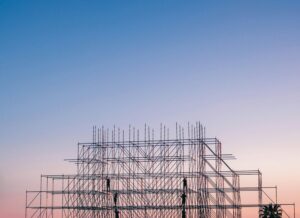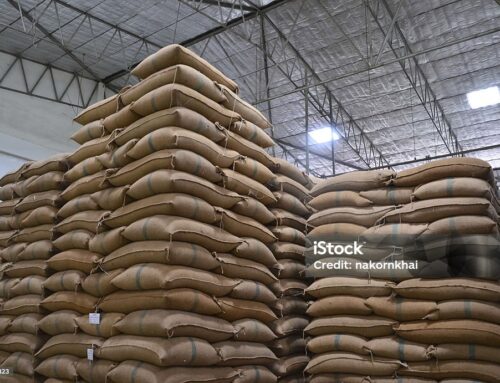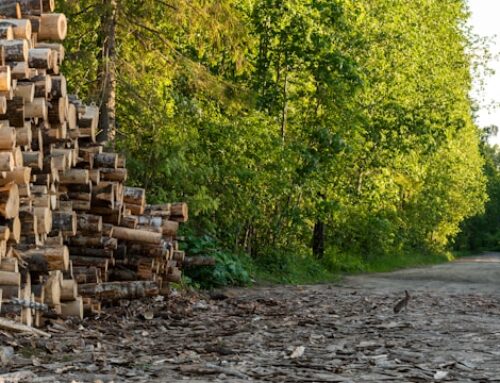
Steel, the backbone of modern infrastructure and manufacturing, is more than just a material; it’s a fundamental commodity that shapes economies and drives progress across the globe. From towering skyscrapers to the smallest surgical instruments, its versatility and strength are unparalleled. Understanding steel as a commodity requires delving into its production, trade, and the myriad factors that influence its global standing.
At its heart, steel is an alloy primarily composed of iron, with carbon being the most crucial alloying element, typically ranging from 0.002% to 2.14% by weight. This carefully controlled addition of carbon significantly enhances the strength and fracture resistance of iron. Pure iron, while abundant, is relatively soft and ductile, making it unsuitable for most structural applications. The introduction of carbon atoms within the iron’s crystal lattice hinders the movement of dislocations, the microscopic defects responsible for plastic deformation, thus hardening the material.
The journey from raw earth to finished steel is a complex and energy-intensive process. It begins with iron ore, the primary raw material, which is extracted from the earth’s crust. Significant iron ore deposits are found in various parts of the world, often influencing the location of major steel processing plants. Regions like Australia, Brazil, China, India, and Russia boast substantial iron ore reserves. The proximity of these mines to steel plants can significantly reduce transportation costs, a major factor in the overall price of steel.
From Earth to Alloy: The Manufacturing of Steel
The conversion of iron ore to steel involves several key stages. The most common route is the blast furnace-basic oxygen furnace (BF-BOF) process. This traditional method begins with feeding iron ore, coke (a carbon-rich fuel), and limestone (a flux material) into a massive blast furnace. Hot air is blasted into the furnace, initiating a series of chemical reactions. The coke combusts, generating intense heat and producing carbon monoxide, which acts as a reducing agent, stripping oxygen from the iron ore to produce molten iron, also known as “pig iron.” The limestone reacts with impurities in the ore and coke, forming slag, which is then separated from the molten iron.
The pig iron, however, still contains a high percentage of carbon and other impurities. It is then transferred to a basic oxygen furnace (BOF), where high-purity oxygen is blown into the molten iron. This process oxidises the excess carbon, silicon, manganese, and phosphorus, converting the pig iron into steel with the desired carbon content and purity.
An alternative, and increasingly important, steelmaking route is the electric arc furnace (EAF) process. EAFS primarily utilize recycled steel scrap as their feedstock, although they can also process direct reduced iron (DRI) or hot briquetted iron (HBI). High-power electric arcs are generated between electrodes, melting the scrap and allowing for precise control of the steel’s chemical composition. The EAF route is generally less energy-intensive than the BF-BOF route and plays a crucial role in promoting a circular economy within the steel industry.
Beyond iron ore and coke, other raw materials are essential in steel manufacturing. Fluxing agents like limestone and dolomite help remove impurities. Alloying elements such as manganese, silicon, chromium, nickel, and molybdenum are added in controlled amounts during the steelmaking process to impart specific properties like increased strength, corrosion resistance, or weldability, resulting in a wide array of steel grades. Water and energy (primarily in the form of electricity and fuel) are also critical inputs.
The Global Landscape: Mines, Mills, and Markets
The geographical distribution of iron ore mines has historically played a significant role in shaping the global steel industry. Regions with abundant and accessible iron ore deposits often became centres for steel production due to lower raw material costs. For instance, the proximity of iron ore in regions of China, India, and historically in parts of Europe and North America facilitated the growth of large-scale integrated steel plants.
However, globalisation and advancements in transportation have somewhat decoupled this direct link. While proximity still offers a cost advantage, efficient shipping and global supply chains allow steel plants to source iron ore from distant locations. Nevertheless, major steel-producing nations often maintain strong ties with iron ore exporting countries.
Giants of the Industry: The Biggest Steel Plants Worldwide
The global steel industry is dominated by several large corporations operating massive integrated steel plants. While rankings can fluctuate based on production volume and mergers, some of the consistently largest steel plants in the world include:
- Baowu Steel Group (China) – Numerous large-scale facilities across China.
- ArcelorMittal (Global) – Operates major plants in various countries, including Europe, North and South America.
- Nippon Steel Corporation (Japan) – Multiple large integrated mills in Japan.
- HBIS Group (China) – Several large steelworks primarily in China.
- POSCO (South Korea) – Operates large integrated steel mills in Pohang and Gwangyang.
- JFE Steel Corporation (Japan) – Major steelmaking complexes in Japan.
- Shagang Group (China) – One of the largest private steel enterprises in China.
- Tata Steel (India and Europe) – Significant production capacities in India and Europe.
- Hyundai Steel (South Korea) – Large integrated steel plants in South Korea.
- JISCO (Jiugang Group) (China) – Major steel producer in Northwest China.
This list is not exhaustive, and the exact order may vary, but it highlights the significant production capacities concentrated in Asia, particularly China and Japan, as well as the global presence of companies like ArcelorMittal and Tata Steel.
The Flow of Steel: Top Producers and Importers
Understanding the global steel market requires identifying the major players in both production and consumption.
Top 10 Steel Producers (approximate order based on recent data):
- China
- India
- Japan
- United States
- Russia
- South Korea
- Germany
- Turkey
- Brazil
- Iran
Top 10 Steel Importers (approximate order based on recent data):
- United States
- Germany
- Italy
- China (can fluctuate depending on domestic demand)
- France
- South Korea
- Thailand
- Mexico
- Canada
- Vietnam
These lists reveal the complex dynamics of the global steel trade. While China is the dominant producer, it also imports significant quantities of specialised steel products. Developed economies like the United States and Germany, with strong manufacturing sectors, are major importers, relying on global supply chains to meet their diverse steel needs.
A Historical Transformation: Changes in Steel Manufacturing
Steel manufacturing has undergone a dramatic transformation over time. Early methods, dating back centuries, involved laborious processes with limited output and inconsistent quality. The invention of the Bessemer process in the mid-19th century revolutionised steel production, enabling the mass production of affordable steel and ushering in the age of steel.
Key changes in steel manufacturing include:
- Increased Scale and Automation: Modern steel plants are massive, highly automated facilities capable of producing millions of tons of steel annually with significantly reduced labour per unit of output.
- Technological Advancements in Furnaces: The development of the basic oxygen furnace and the electric arc furnace provided more efficient and versatile methods for steel production. Continuous casting, introduced in the latter half of the 20th century, significantly improved efficiency and steel quality by directly casting molten steel into semi-finished products, bypassing the energy-intensive ingot casting and rolling stages.
- Improved Quality Control: Advanced sensors, computer modeling, and non-destructive testing methods ensure stringent quality control throughout the production process, leading to more consistent and reliable steel products.
- Focus on Energy Efficiency and Environmental Performance: Driven by economic pressures and increasing environmental regulations, the steel industry has made significant strides in improving energy efficiency and reducing emissions. This includes waste heat recovery systems, more efficient furnace designs, and the increasing use of recycled scrap.
- Development of Advanced Steel Grades: Continuous research and development have led to the creation of a vast array of advanced steel grades with tailored properties, meeting the specific demands of various applications, from high-strength low-alloy (HSLA) steels for automotive and construction to specialized stainless steels for medical and chemical industries.
- Digitalization and Industry 4.0: The integration of digital technologies, including artificial intelligence, machine learning, and the Internet of Things (IoT), is transforming steel manufacturing, enabling predictive maintenance, optimized production scheduling, and improved process control.
The Price of Strength: Geographical Influence on Global Steel Prices
The geographical location of iron ore mines can indirectly influence global steel prices through several mechanisms:
- Transportation Costs: Proximity to iron ore sources reduces transportation costs for steel producers, potentially leading to lower production costs and more competitive pricing in regional markets. Conversely, steel plants relying on distant ore sources face higher input costs.
- Regional Supply and Demand Dynamics: Regions with abundant local iron ore may develop strong domestic steel industries, influencing regional supply and demand balances and thus affecting prices within those markets.
- Infrastructure Development: The presence of iron ore resources can spur infrastructure development (railways, ports) in a region, which can further facilitate the growth of the steel industry and impact its cost competitiveness.
- Government Policies and Regulations: Countries with significant iron ore reserves may implement policies related to mining, exports, and environmental regulations that can affect the global supply and price of both iron ore and steel.
- Geopolitical Factors: Political stability and trade relationships between iron ore exporting and steel producing nations can influence supply security and price volatility. Disruptions in supply chains due to geopolitical events can lead to price increases.
It’s important to note that global steel prices are influenced by a multitude of factors beyond the location of iron ore mines, including energy costs, labor costs, technological advancements, global demand, trade policies, and currency exchange rates.
The Environmental Footprint: Impacts and Mitigation
Steel manufacturing is an energy-intensive industry with significant environmental impacts, including:
- Greenhouse Gas Emissions: The burning of fossil fuels in blast furnaces and power generation for electric arc furnaces are major sources of carbon dioxide (CO2) emissions, contributing to climate change.
- Air Pollution: Emissions of particulate matter, sulfur oxides (SOx), and nitrogen oxides (NOx) from steel plants can contribute to air pollution and respiratory problems.
- Water Pollution: Wastewater from various stages of the steelmaking process can contain pollutants like heavy metals, oils, and suspended solids, requiring careful treatment.
- Waste Generation: Steel production generates significant amounts of solid waste, including slag, dust, and mill scale, requiring proper disposal or recycling.
- Land Use: Mining activities for iron ore extraction can lead to habitat destruction and land degradation.
The steel industry is increasingly focused on addressing these environmental impacts through various measures:
- Improving Energy Efficiency: Implementing technologies and processes that reduce energy consumption per ton of steel produced.
- Increasing the Use of Recycled Scrap: Utilizing electric arc furnaces, which primarily use scrap, reduces the demand for virgin iron ore and lowers energy consumption and emissions compared to the BF-BOF route.
- Carbon Capture and Storage (CCS): Developing and deploying technologies to capture CO2 emissions from steel plants and store them underground.
- Hydrogen-Based Steelmaking: Exploring the use of hydrogen as a reducing agent in iron ore reduction, which would significantly reduce or eliminate CO2 emissions.
- Sustainable Mining Practices: Implementing responsible mining techniques to minimize land disturbance and environmental impact.
- Water Recycling and Treatment: Implementing closed-loop water systems and advanced wastewater treatment technologies to reduce water consumption and pollution.
- Waste Valorization: Finding beneficial uses for byproducts like slag, for example, in construction materials.
The Cutting Edge: Technological Advancements in Steel Manufacturing
Technological advancements continue to drive innovation and efficiency in steel manufacturing:
- Digitalization and Automation: The integration of sensors, data analytics, artificial intelligence, and robotics is optimizing processes, improving quality control, and enhancing safety.
- Advanced Process Control: Sophisticated control systems allow for precise management of furnace operations, leading to improved energy efficiency and product consistency.
- Near-Net-Shape Casting: Techniques like thin-slab casting and strip casting reduce the need for extensive downstream processing, saving energy and costs.
- Development of Advanced Materials: Ongoing research focuses on creating new steel grades with enhanced properties, such as ultra-high strength steels for lighter and more fuel-efficient vehicles, and corrosion-resistant steels for demanding environments.
- Additive Manufacturing (3D Printing) with Steel: While still in its early stages, 3D printing with steel powders opens up possibilities for creating complex geometries and customized parts.
- Smart Sensors and IoT: The deployment of interconnected sensors throughout the production process provides real-time data for monitoring and optimization.
Navigating Trade Winds: Tariffs and Trade Policies
Tariffs and trade policies have a significant impact on the global steel market. Tariffs, which are taxes imposed on imported goods, can increase the cost of imported steel, making domestically produced steel more competitive in the local market. This can protect domestic steel industries from foreign competition but can also lead to higher prices for steel consumers and potentially trigger retaliatory tariffs from other countries.
Trade policies, such as quotas (limiting the quantity of imported steel) and anti-dumping duties (imposed on steel sold below its fair market value), also influence the flow of steel across borders. These policies can create trade disputes, distort global supply chains, and impact the competitiveness of steel producers and consuming industries.
The imposition of tariffs and other trade barriers can lead to:
- Increased Domestic Steel Prices: Reduced import competition can allow domestic producers to raise prices.
- Retaliatory Measures: Affected countries may impose tariffs on other goods from the initiating country, leading to trade wars.
- Shifts in Global Trade Flows: Buyers may seek alternative sources of steel, and producers may redirect their exports to different markets.
- Impact on Downstream Industries: Higher steel prices can increase costs for industries that rely on steel, such as automotive, construction, and manufacturing.
- Investment Decisions: Trade policies can influence investment decisions in the steel industry, encouraging or discouraging expansion in certain regions.
Forging a Sustainable Future: Industry Efforts for Reduction and Improvement
The steel industry recognizes the urgent need to improve sustainability and reduce its carbon footprint. Several key measures are being taken:
- Investing in Energy-Efficient Technologies: Implementing best practices and adopting advanced technologies to minimize energy consumption.
- Increasing Scrap Recycling Rates: Promoting the collection and processing of steel scrap to reduce reliance on virgin materials and the energy-intensive BF-BOF route.
- Developing and Deploying Carbon Capture Technologies: Investing in research and pilot projects for capturing and storing CO2 emissions.
- Transitioning to Green Hydrogen: Exploring the potential of using hydrogen produced from renewable sources as a clean reducing agent in iron ore reduction.
- Improving Process Efficiency: Optimizing every stage of the steelmaking process to minimize waste and energy use.
- Promoting Circular Economy Principles: Finding ways to reuse and recycle byproducts and minimize waste generation.
- Collaborative Research and Development: Participating in industry-wide initiatives to develop and share sustainable technologies and best practices.
- Setting Emissions Reduction Targets: Many steel companies are setting ambitious targets for reducing their greenhouse gas emissions in line with global climate goals.
The journey towards a more sustainable steel industry is complex and requires significant investment and innovation. However, the industry recognises its crucial role in a low-carbon future and is actively pursuing various pathways to reduce its environmental impact.
In conclusion, steel as a commodity is deeply intertwined with global industrial activity, trade, and environmental considerations. Its production, influenced by the geographical distribution of raw materials and technological advancements, has undergone significant evolution. The global steel market is dynamic, shaped by the interplay of supply and demand, trade policies, and the ongoing efforts to create a more sustainable future for this essential material. The enduring strength of steel lies not only in its physical properties but also in its adaptability and the continuous innovation within the industry to meet the evolving needs of a globalised world.



